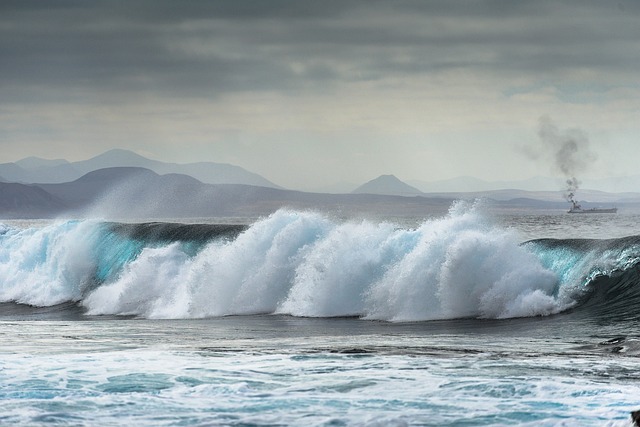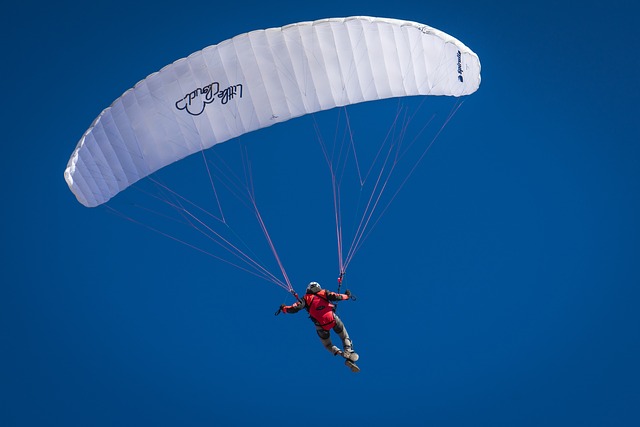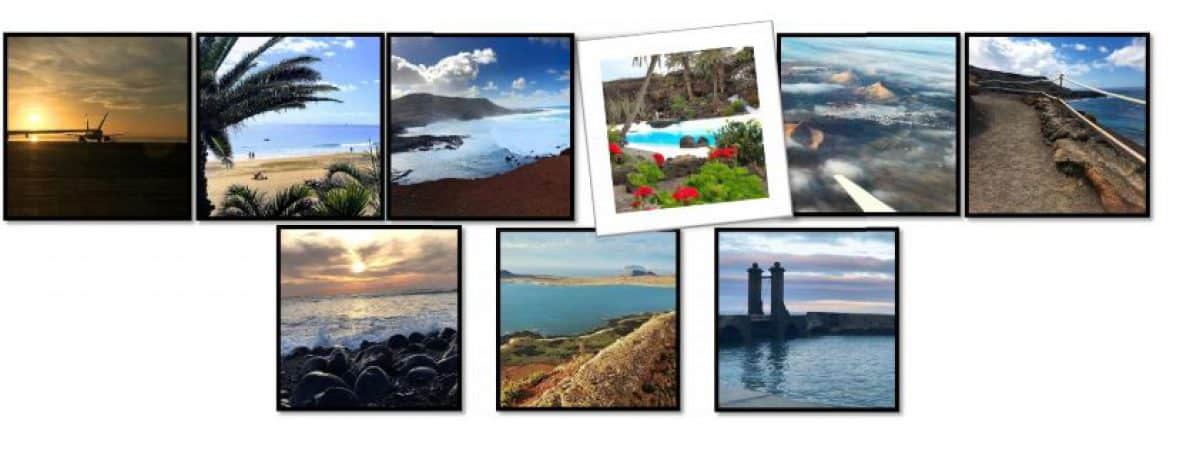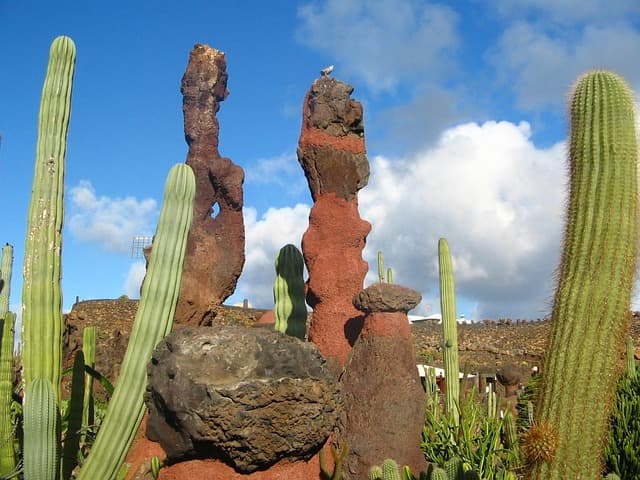This post is also available in:  Español (Spanish)
Español (Spanish)
When you travel, it is important to know the meteorological conditions of your destination. Here we will give you a comprehensive guide on how the weather in Lanzarote is. So you can pack better, know what to expect, and have a smoother trip.
Understanding Lanzarote’s Weather
To understand the Lanzarote’s climate, it is important to know the geography of the island. This is a volcanic land, one of the Canary Islands, located near the coast of Africa. Thus, the climate is subtropical, summers are dry and warm, while winters are wet.
It is also essential to make a difference between two broad areas of the island, el northeast y el southwest. On the north, there is more rain, wind, and cloudy. Meanwhile, the south is dryer, almost a desert, less windy and hotter.
Year-Round Temperatures
According to Metoffice the highest average temperature daily is 24.9 °C. And the lower is 17.4 °C. But it can get up to 30 °C in the summer, and down to 15 °C in the winter.
The warmest months are July and August, and the coolest are December and January.
Seasonal Changes
The seasons in Lanzarote are not as distinct as the rest of Europe, because of its closeness to Africa. The summer months are generally warmer and drier. While the winter months are cooler and wetter. Yet, it is possible to have sunny days in the winter and rainy days in the summer.

Monthly Weather Breakdown
Here is a Lanzarote’s weather monthly breakdown:
Winter: December – February
The weather in Lanzarote in winter is much warmer than winters in other areas of Europe. That is why tourists from countries like the UK tend to visit the island, so they can escape the cold, and enjoy more pleasant temperatures.
The temperatures will be around 20 degrees. Also, it will be more cloudy, but there will still be sunny days ideal for the beach, especially in the south and west of the island.
There is a chance of precipitation this season, but not more than ten days a month.
Spring: March – May
In the spring, you will notice the flowers emerging on the island. The climate is warmer and drier, although not as hot as in summer. Thus, it is a good time to visit Lanzarote.
The temperature hovers around 22 °C, and there is much less chance of rain. You’ll still want to bring a light jacket for evening and night outings, as the temperature can drop as low as 14 °C.
In May, at the end of spring, temperatures begin to drop, the evenings and nights are warmer. There is more sun, so don’t forget to bring sunscreen.
Summer: June – August
Summer is the hottest and driest time in Lanzarote. The average temperatures rise to 26 °C, and there is only a chance of rain 2 days a month.
The heat begins in June, there is very little cloudiness, and the “calima” can come from Africa. Although it is not so common, when it happens temperatures rise considerably.
While July is the month with the most sun, is the hottest, it is also the windiest.
August is the hottest month of the year on the island, also the most popular for tourism. So, if you are planning your holiday for this month, you should book the tours in Lanzarote in advance.
Autumn: September – November
Autumn is a transitional one, with the weather resembling that of spring. Temperatures reach 23 °C, and the possibility of rain, albeit minimal. In September, the skies are clear and there is enough sun to enjoy Lanzarote.
October and November are rainier, although they are still dry and with good sun.
Microclimates in Different Areas of the Island
One of the unique features of Lanzarote is its microclimates. Depending on which part of the island you visit, you will notice some differences compared to the rest. For example, the north experiences strong winds, while the south has higher temperatures.
Climate in the North of Lanzarote
The north of Lanzarote is characterized by the influence of the trade winds. This phenomenon makes the area ideal for activities such as surfing or windsurfing.
The climate in the north is slightly cooler and more humid than in the south, with higher levels of precipitation. As a result, this region has denser vegetation and greater biodiversity.
Climate in the South of Lanzarote
The south of Lanzarote contrasts somewhat with the north, as it is more arid and warmer. Precipitation is lower in this area, and the wind is warmer, although gentler than in the north.
The types of crops found in the south highlight a noticeable difference. While cacti are more common in this region, the north has areas where palm trees abound.
Climate in Coastal vs. Inland Areas
The main difference between coastal and inland areas of the island is the temperature. The sea acts as a thermal regulator, which means temperatures along the coast are more moderate. In contrast, inland areas can be cooler, especially at night.
Weather Phenomena in Lanzarote
The Canary Islands Trade Winds
The Canary Islands Trade Winds are a constant source of wind in Lanzarote. These winds maintain the temperatures mild and the humidity low.

Rainfall Patterns
Lanzarote receives very little rainfall. The average annual rainfall is only 200 mm. Most of the rain falls in the winter months, in December, and January.
In the summer months, June, July and August, there is little or no rain.
How to Dress for the Weather in Lanzarote
The best way to dress for the weather in Lanzarote is to layer your clothing. This allows you to adjust your clothing as needed, depending on the temperature and weather conditions.
Summer Wardrobe
If you are travelling during the summer months, you should pack in your suitcase light, airy clothing, such as shorts, skirts, and t-shirts. You may also want to pack a light jumper or jacket for cooler evenings.
Do not forget a bathing suit, hat, comfortable shoes, and glasses.
Winter Wardrobe
On the cooler months, you should pack light clothes, but also warm, comfortable clothing, such as long pants, sweaters, and jackets. You may also want to pack a raincoat or umbrella.
Remember to check the weather forecast before going out.
Activities Based on the Weather
Depending on when you are travelling to Lanzarote, you should plan ahead what you are doing. This way, you can save time and money.
Sunny Day Activities
There are many things to do on a sunny day in Lanzarote. You can go swimming, sunbathing, hiking, biking, or golfing. You can also visit the many beaches, museums, and historical sites on the island.
Not only that, but you can also visit the Cactus Garden, Jameos del Agua and other touristic attractions on the island.
Cloudy Day Activities
If it is a cloudy day in Lanzarote, you can still enjoy many of the island’s activities. You can visit the Timanfaya National Park, go shopping in the Costa Teguise market, or visit one of the many restaurants or bars on the island.
Windy Day Activities
If it is a windy day in Lanzarote, you can go windsurfing, kitesurfing, or sandboarding. You can also visit the Papagayo Beach, known for their strong winds.
Conclusion
Lanzarote has a mild climate with warm, dry summers and mild, wet winters. There are many things to do on the island, regardless of the weather. So, whether you are looking for a sunny beach holiday or a more adventurous trip, Lanzarote is the perfect destination for you.
This post is also available in:  Español (Spanish)
Español (Spanish)

